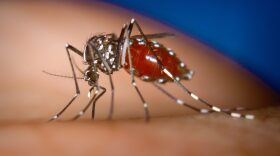Scientists from the University of Hawaiʻi at Mānoa are looking into the connection between climate change and El Niño-Southern Oscillation.
The climate in many parts of the world is impacted by the cycle of warm El Niño and cold La Niña conditions in the eastern Pacific Ocean — a large body of water south of the Hawaiian islands.
Climate change predictions were made by making model simulations using a supercomputer. Consistent with many other climate change studies, the supercomputer showed that the impacts of floods and droughts will become more drastic as ocean temperatures rise.
However, scientists cannot agree on how global warming will change the patterns of El Niño.
"There's a certain number of models that show that El Niño will become stronger, and there’s a certain number of models that show that El Niño will stay the same, and a number of models that show that El Niño will become weaker," said Malte Stuecker, an assistant professor at the UH Mānoa School of Ocean and Earth Science and Technology.
"There’s still a large disagreement there, even though all of them show that the Earth will warm. But what all the models show is that our climate extremes, such as floods and droughts, will become stronger during El Niño events. Even if the actual events weaken, the impacts will still be stronger in a warmer world. That may sound counterintuitive, but that’s because the atmosphere is much more sensitive in a warmer world," Stueker explained.
Stueker’s team’s observations showed that El Niño will become weaker as ocean temperatures rise.
Regardless of El Niño’s future, the heavy rainfall caused by the phenomenon will become more extreme in the Pacific, including Hawaiʻi.





